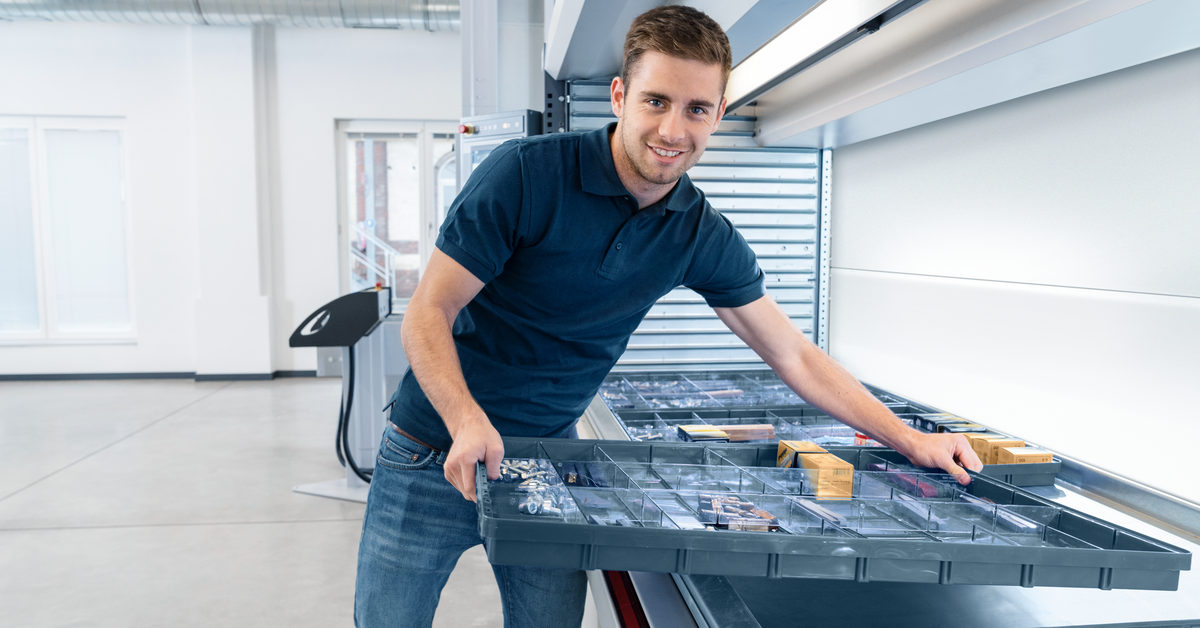Warehouse work might not seem all that risky on the surface, but picking and retrieving stored parts often results in injuries sustained from overexertion involving lifting, pushing, pulling, holding, carrying, or throwing. Other tasks resulting in injuries included bending, crawling, reaching, twisting, climbing, stepping, kneeling, sitting, standing, or walking.
According to the National Safety Council’s (NSC) analysis of Bureau of Labor Statistics (BLS) data, back-related injuries and illnesses accounted for over 15 percent of the total 888,220 injuries and illnesses in private industry. The data also indicates that lower back injuries cost $37,309 per claim, while upper back injuries result in $35,833 paid by workers’ compensation insurance per incident.
How Much Could an Ergonomic Injury Cost?
The NSC’s figures for back injuries ($35,000 to $38,000 per workers’ comp claim) are the direct costs, including medical, hospitalization, and rehabilitation expenses. Also included in the costs directly related to the accident are property damage and any emergency services required.
However, with many claims, the direct costs are merely the “tip of the iceberg” as indirect costs can be even more devastating. These indirect costs can include the following:
- Productivity losses
- Salary costs
- Employee benefits
- Administrative costs
- Legal costs
- Negative impact on the company’s reputation
- Hiring and training costs to replace an injured worker
Manufacturers can Control these Hefty Workers’ Compensation Claims
Workers’ compensation claims are exorbitantly high. Why not replace the wasted money spent on them by putting it into something that will provide your company with long-term benefits, reduce your workers’ comp premiums, and keep your experienced workers’ on the job?
Automated Storage and Retrieval Systems can improve warehouse ergonomics, make the picking and order fulfillment process more efficient, and eliminate the risk of injury. By increasing warehouse productivity, reducing costs, and enhancing safety, the cost justification for a system is relatively straightforward.
Here are some of the best options for minimizing or eliminating exertion injuries in the workplace:
A vertical lift module (VLM) is an automated storage and retrieval system consisting of two vertical stacks of trays, one in the front and the other in the rear. In the middle of the forward and rear columns, an extractor device retrieves and delivers the requested tray to the operator. Among its many benefits, the VLM eliminates injury-causing reaching, bending, and climbing.
Like the VLM, vertical buffer modules save all the walking, searching, climbing, and kneeling required in traditional warehouse methods. Instead, items are delivered to an operator at a safe waist-high position.
Vertical carousels have shelves or drawers that rotate up or down using the shortest path to deliver stored items to an operator automatically. Because the items are positioned ergonomically when they reach the pick window, bending and reaching (and the injuries that typically accompany them) are no longer a part of the process.
Like the vertical options, the horizontal carousel is an efficient high-speed system that stresses safety with a feature that stops the carousel as soon as the operator steps onto a mat. It also delivers items to the access opening at a height that eliminates bending, kneeling, or reaching.
Manual material handling often leads to workers’ compensation injuries from the reaching, walking, stretching, bending, stooping, pulling, pushing, twisting, gripping, and climbing that comes with the job.
Improper lifting in warehouses is another cause of back injuries. However, some companies also allow workers’ to lift heavy parts by hand. Even if the lift is done properly, missteps and balance issues can result in an injured employee and another workers’ comp claim. Integrate an ergonomic hoist with your storage and retrieval system. The cost of the hoist will be substantially lower than even one workers’ compensation claim.
Automated Storage and Retrieval Systems have Benefits Beyond Safety
While safety may be one of the primary advantages of an automated system, there are other cost-saving benefits to consider, including dense storage that reduces expensive floor space by up to 85 percent and the flexibility of modules to meet your changing needs.
Also, think about the benefit to your customers: light-directed picking systems boast nearly 100 percent picking accuracy, creating happy customers that bring future orders and referrals. Faster access times mean improved throughput and a stronger bottom line. And computerized inventory control simplifies warehouse management, along with interface modules communicating with other warehouse management systems (WMS) and enterprise resource planning (ERP) systems.
Most importantly, your system will save you all those direct and indirect costs associated with worker compensation claims while keeping your trained and experienced workers’ safe and productive.
Tags: Automation, Blog


